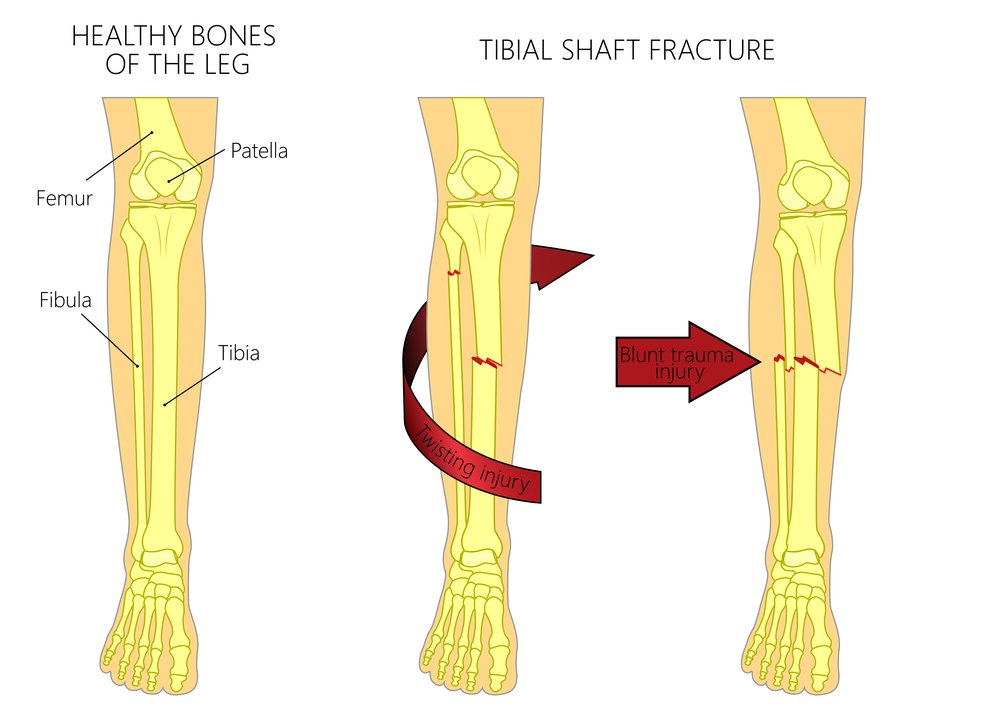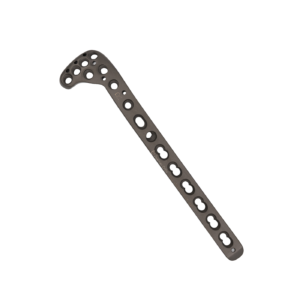
Tibia fractures are common injuries that affect the shinbone, which is the larger and weight-bearing bone in the lower leg. These fractures can be caused by a variety of factors, including trauma, sports injuries, and falls. In severe cases, surgery may be required to stabilize the bone and promote proper healing. One of the common methods used in the surgical treatment of tibia fractures is the use of plates. In this blog post, we will delve into the details of tibia fractures, their treatment with plates, and what you need to know about the procedure.
Understanding tibia fractures
The tibia, or shinbone, is susceptible to fractures due to its position and the forces it endures during physical activities. Tibia fractures can be classified into several types, including stable fractures, displaced fractures, open fractures, and comminuted fractures. The severity and location of the fracture determine the treatment options.
Types of tibia fractures
“Proximal medial tibia plate” and “Distal medial tibia plate” refer to two different types of orthopedic implants used in the treatment of fractures or other conditions affecting the medial (inner) aspect of the tibia bone, which is the larger bone in the lower leg.
Proximal medial tibia plate
This type of plate is designed to stabilize fractures or correct deformities near the upper portion of the tibia, closer to the knee joint. It is typically made of metal, such as titanium or stainless steel, and has a specific shape that conforms to the anatomy of the proximal tibia. The plate is surgically placed along the medial surface of the tibia bone and is secured with screws to provide stability and support during the healing process. Proximal medial tibia plates are often used in cases of complex fractures or when other treatment methods, such as casting or external fixation, are not suitable.
Distal medial tibia plate
This type of plate is utilized for fractures or deformities located near the lower portion of the tibia, closer to the ankle joint. Similar to the proximal medial tibia plate, it is also constructed from metal and features a shape that fits the anatomy of the distal tibia. The plate is surgically implanted along the medial side of the bone and fixed with screws to restore alignment, promote healing, and provide structural support to the fractured or damaged area. Distal medial tibia plates are commonly employed in cases of fractures near the ankle or severe tibial fractures that extend to the distal portion of the bone.
Orthopedic implants for proximal tibia fractures
Orthopedic implants used for proximal tibia fractures typically include:
Proximal Tibia Plate
This implant is specifically designed for fractures near the upper portion of the tibia, closer to the knee joint. It is usually made of metal, such as titanium or stainless steel, and features a contoured shape that matches the anatomy of the proximal tibia.
Intramedullary Nail
An intramedullary nail is a long metal rod that is inserted into the medullary canal of the tibia. It is commonly used for proximal tibia fractures that extend into the shaft of the bone.
External Fixator
In some complex proximal tibia fractures or cases with significant soft tissue damage, an external fixator may be used. This device consists of metal pins or screws that are inserted into the bone above and below the fracture site.
Orthopedic implants for distal tibia fractures
Orthopedic implants used for distal tibia fractures typically include:
Distal Tibia Plate
This implant is specifically designed for fractures near the lower portion of the tibia, closer to the ankle joint. It is typically made of metal, such as titanium or stainless steel, and features a shape that matches the anatomy of the distal tibia.
Intramedullary Nail
Similar to proximal tibia fractures, an intramedullary nail can also be used for distal tibia fractures that extend into the shaft of the bone. The nail is inserted into the medullary canal of the tibia through a small incision near the knee or ankle joint.
External Fixator
In some complex distal tibia fractures, especially those associated with severe soft tissue injuries, an external fixator may be used. This device consists of pins or screws that are inserted into the bone above and below the fracture site.
Proximal Tibia plate
A proximal tibia plate is an orthopedic implant specifically designed for the treatment of fractures or deformities near the upper portion of the tibia bone, which is located closer to the knee joint. It serves as a crucial tool in providing stability, support, and alignment during the healing process. Made from biocompatible materials such as titanium or stainless steel, proximal tibia plates are carefully contoured to match the anatomy of the proximal tibia, ensuring a precise fit and optimal stability. These plates feature multiple holes along their length, allowing for the secure fixation of screws.
Some proximal tibia plates also incorporate specialized features like locking screw options, which create a fixed-angle construct between the plate and the bone, providing enhanced fixation. The specifications of proximal tibia plates can vary, with differing dimensions, widths, and curvatures to accommodate variations in patient anatomy and fracture patterns. Hole patterns and screw options are tailored for flexibility in fixation techniques, allowing customization based on individual needs.
Distal tibia plate
A distal tibia plate is an orthopedic implant specifically designed for the treatment of fractures or deformities near the lower portion of the tibia bone, which is located closer to the ankle joint. It plays a vital role in providing stability, support, and alignment during the healing process. Distal tibia plates are typically constructed from biocompatible materials such as titanium or stainless steel, ensuring strength and compatibility with the bone. These plates are meticulously contoured to match the anatomy of the distal tibia, ensuring a precise fit and optimal stability. They are equipped with multiple holes along their length to accommodate screws, allowing for secure fixation.
Distal tibia plates may also include specialized features like locking screw options, creating a fixed-angle construct between the plate and the bone, enhancing fixation strength. The specifications of distal tibia plates can vary, with different dimensions, widths, and curvatures to accommodate variations in patient anatomy and fracture patterns. Hole patterns and screw options are tailored to provide flexibility in fixation techniques, allowing customization based on individual requirements.
Distal tibia plates offer numerous benefits in the treatment of fractures near the lower portion of the tibia. Their primary advantage lies in providing stability and alignment to fractured bones, facilitating proper healing.
Orthopedic implants by Zealmax Ortho
Zealmax Innovations Pvt. Ltd., a leading manufacturer and exporter of orthopedic implants, specializes in the production of high-quality humerus plates. With a legacy of 12+ years, we take immense pride in our commitment to innovation and delivering genuine products that enable people to regain their mobility and quality of life without any limitations.
At Zealmax Innovations, we prioritize the well-being of patients by ensuring that our humerus plates provide excellent fixation, stability, and alignment.



